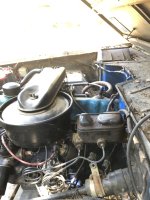All brake pads sold in the US have edge codes printed on them. The edge code includes two letters. The first letter is low temp performance (200-400 degrees) and the second letter is high temp performance (300-650 degrees). The letters equate to the following friction coefficients: C= up to 0.15, D= over 0.15 up to 0.25, E= over 0.25 up to 0.35, F= over 0.35 up to 0.45, G= over 0.45 up to 0.55, H= over 0.55, Z= unclassified. The Automotive Manufacturers Equipment Compliance Agency governs the tracking of all of the codes. You can find the spreadsheet for all covered pads on their website at ameca.org. The latest list was published on August 18th and is at
this link. There is other information like year of manufacture, composition materials, etc. in those codes as well, but if you are just looking for friction coefficient, just look for those two letters on the side of the pad. The most aggressive pads will be marked HH.













